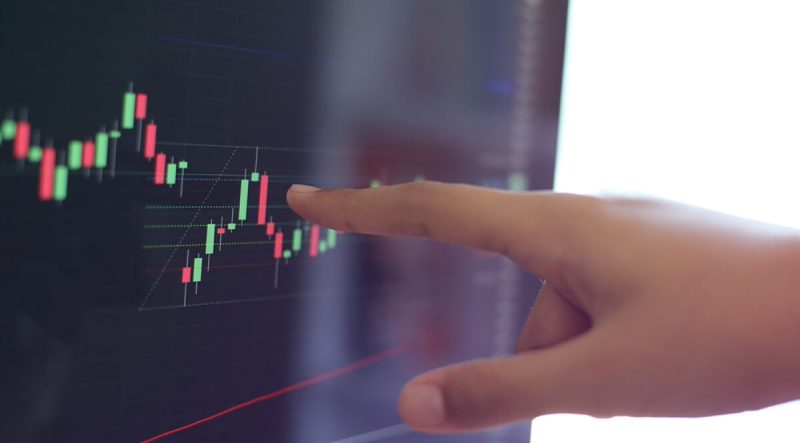Triple Top Pattern You Should Know As a Beginner Trader
Key Takeaways:
Pattern Identification: The triple top pattern predicts price reversals.
Bearish Signal: Three peaks signal a shift from uptrend to downtrend.
Trading Approach: Traders react by selling short or closing long positions.
Confirmation and Response: Increased volume validates the pattern; traders adjust positions.
Are you one of those motivated traders eager to learn about the Triple top pattern and what it represents? What can you track with this pattern, and how beneficial can it be for you?
First, the triple top chart pattern, as some individuals call it, “triple top stock pattern, ” represents a formation used in technical Analysis to predict a reversal in an asset’s price movement.
It consists of three peaks, marking it as the top of the line in bearish signals, indicating that the asset may no longer be rallying and that lower prices may be imminent.
The triple pattern typically occurs after an uptrend, contrasting with the double-top pattern, which comprises two peaks.
Let’s know when this pattern typically occurs, shall we?
When does the triple-top pattern occur?
A triple top happens when an asset’s price hits three peaks at about the same level, showing a resistance area.
The dips between these peaks are called swing lows. If the price drops below the lows after the third peak, it completes the pattern.
This signals a potential decrease that traders are monitoring. After facing resistance, prices drop to find support, creating a pattern with three peaks at similar levels.
Resembling a head and shoulders pattern
A triple top resembles a head and shoulders pattern, but with the middle peak almost equal to the others, unlike the head and shoulders, where the middle one is usually higher.
It’s also like a double top, where the price hits resistance twice before dropping. Now, let’s take a look at a specific trading approach!
Trading Approach
Traders handle triple tops similarly to head and shoulder patterns. For instance, a stock reaches $119, drops to $110, then goes up to $119.25.
Afterwards, it drops to $111 and goes up again to $118. However, if it falls below $111, traders predict it will continue to drop.
Let’s take a look at the example pattern below:
What does a triple top mean in stocks?
A triple top formation signals a bearish trend reversal regarding the triple-top pattern and its meaning in the stock market. It emerges when prices climb steadily, reaching a point of resistance where they fail to surpass.
Following this resistance, prices retreat to find support, forming a distinct pattern characterized by three peaks at approximately the same level.
This pattern shows a shift from an uptrend to a downtrend, suggesting potential downward movement in the stock’s price.
How to trade Triple Tops the best?
If you’re eager to know how trading the triple top pattern is done, it is crucial to note the following: Facing a triple top pattern, traders often sell short or close long positions when the asset’s price dips below the pattern’s support level.
This support level is typically recognized as the recent low following the second peak. Alternatively, traders may draw a trendline connecting the lows with the peaks and confirm the pattern when the price falls below this line, anticipating further declines.
Incorporating price action, they assess the behaviour of the asset’s price to determine the pattern’s strength.
Confirming the Pattern
According to professional technical analysts, traders watch for increased trading volume to validate the pattern as the price breaks below the support level.
A surge in volume indicates strong selling interest, bolstering the pattern’s credibility. This volume surge is often a key factor considered alongside price action.
Low trading volume may mean that a pattern is more likely to fail. This failure could lead to a price increase instead of a decrease.
Low trading volume may indicate a higher chance of a price increase than a decrease due to pattern failure.
Estimating downside target
The pattern offers a downside target, approximated by subtracting the pattern’s height from the breakout point.
Nonetheless, this target is an estimate and may only sometimes be achieved. Traders utilize this price target to reduce potential losses if the price moves unfavourably.
Additional Analysis to note
Traders often combine triple top pattern analysis with other technical indicators and chart patterns.
For instance, they might monitor for a bearish MACD crossover after the third peak or observe the Relative Strength Index (RSI) exiting overbought territory to confirm the expected price decline.
Integrating stop-loss orders into their strategy, traders seek to manage risk by automatically selling their positions if the price moves beyond predetermined levels.
Deciphering Triple Tops: Bullish or Bearish?
The triple top pattern, often regarded as the top is a bearish signal in market analysis, emerges when there are three successive peaks at approximately the same price level, indicating an imminent trend change to the downside.
On the flip side, the triple bottom pattern denotes a bullish reversal, indicating a change in trend direction towards upward movement.
Although triple tops and bottoms occur less frequently than their double counterparts, their presence signals notable shifts in the market landscape, reflecting increased selling pressure and potential trend reversals.
Insights for Traders
These formations are crucial for traders looking to take a short position, indicating potential downward trends.
However, identifying these formations can be challenging due to their rarity, making them harder to pinpoint and act upon.
Typically unfolding over three to six months, triple top patterns allow traders to recognize and respond to market dynamics.
Conclusion
In conclusion, mastering the triple top pattern is essential for traders seeking to navigate potential market reversals and capitalize on profitable opportunities.
The post Triple Top Pattern You Should Know As a Beginner Trader appeared first on FinanceBrokerage.


